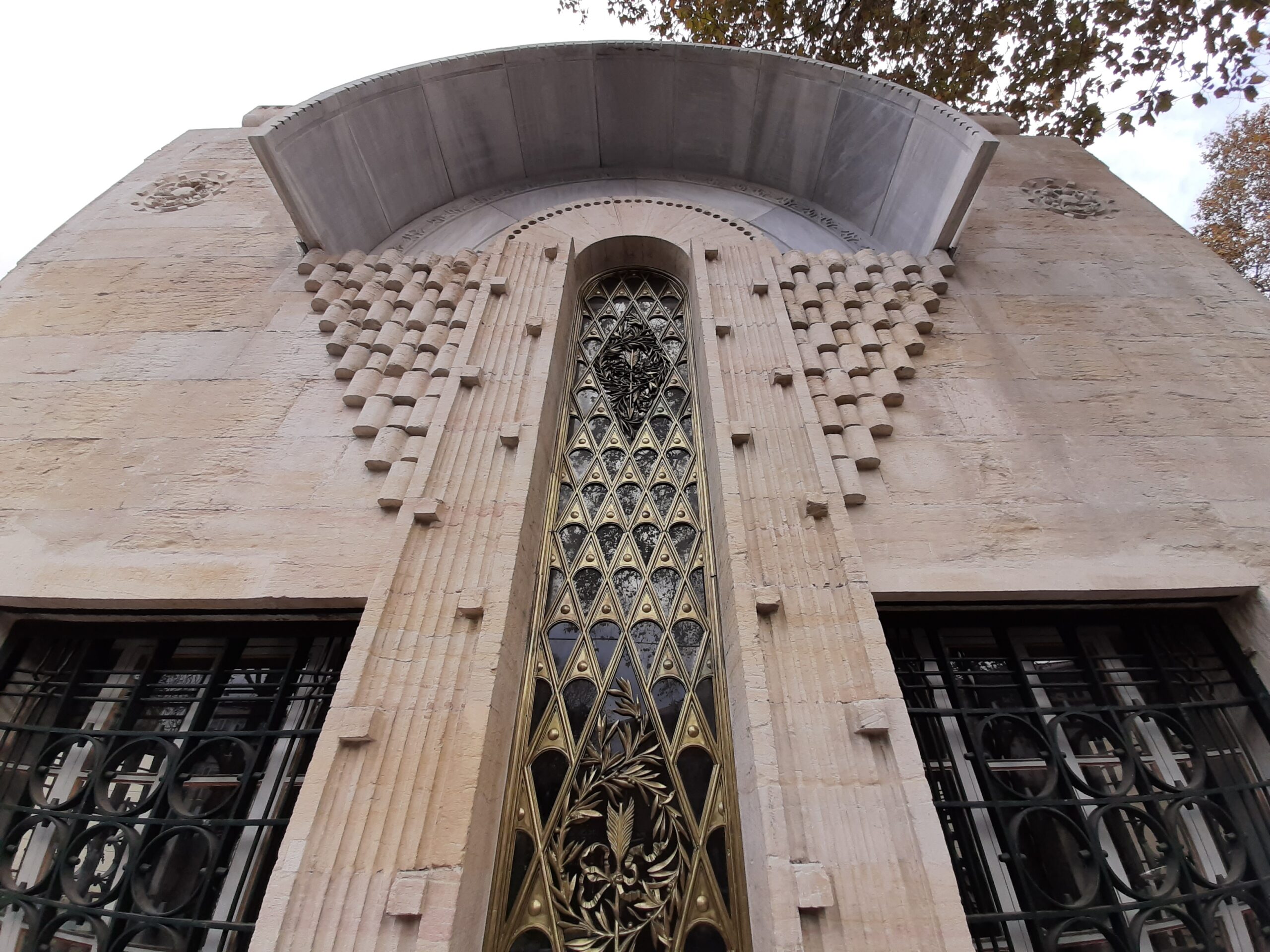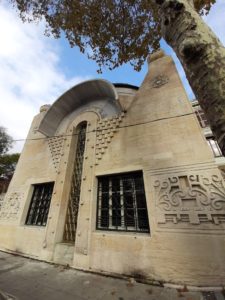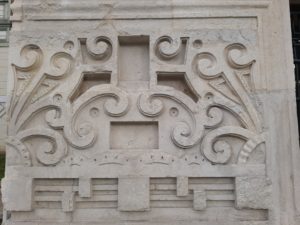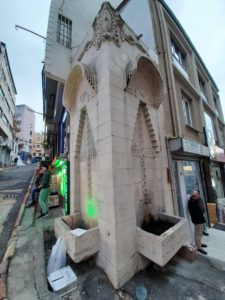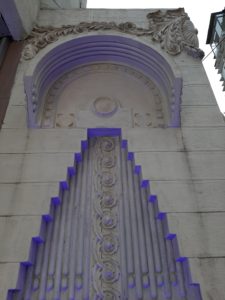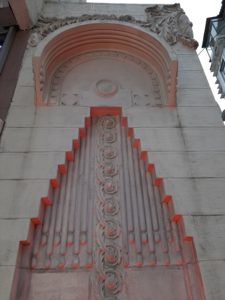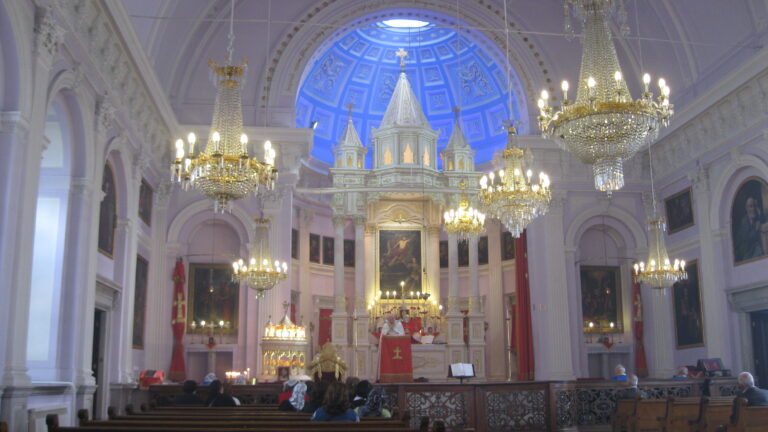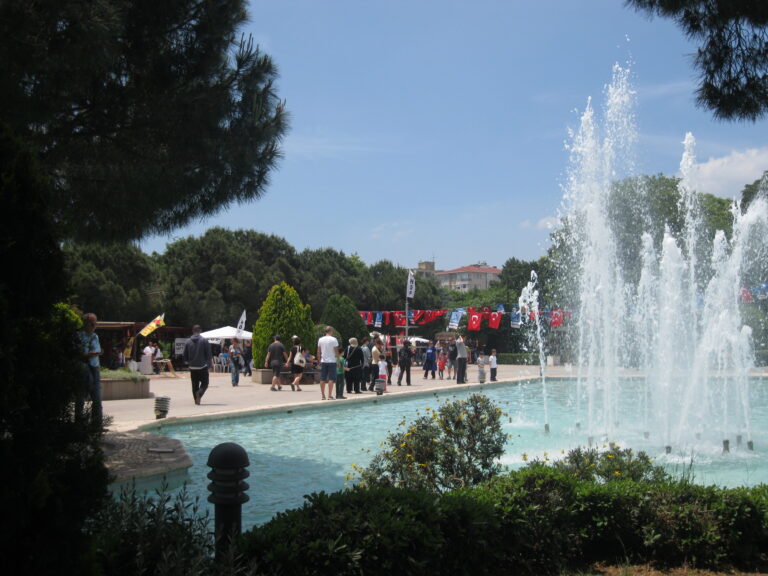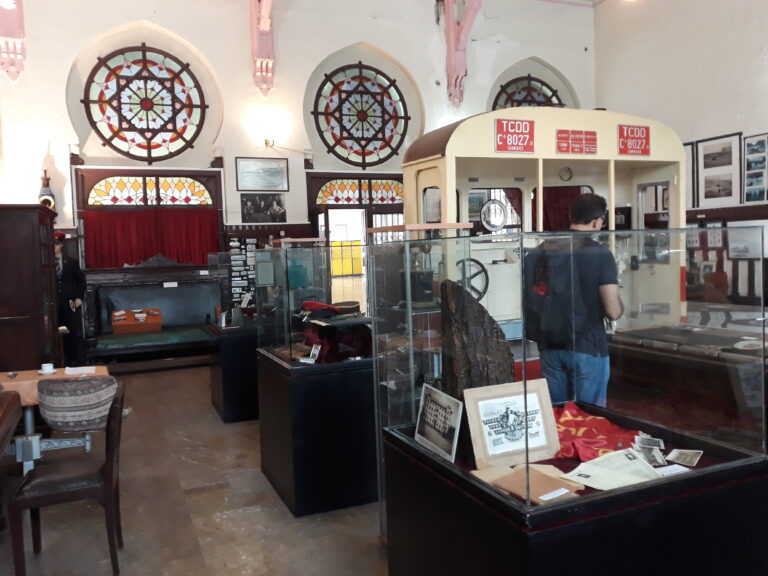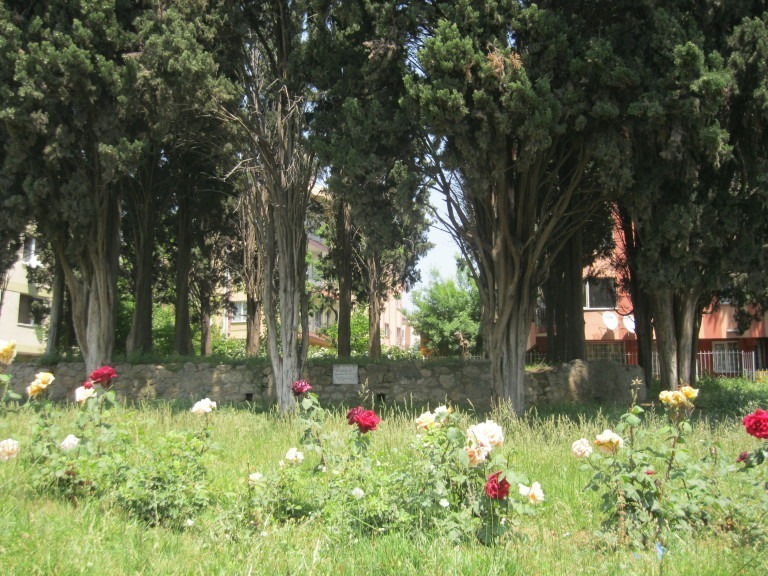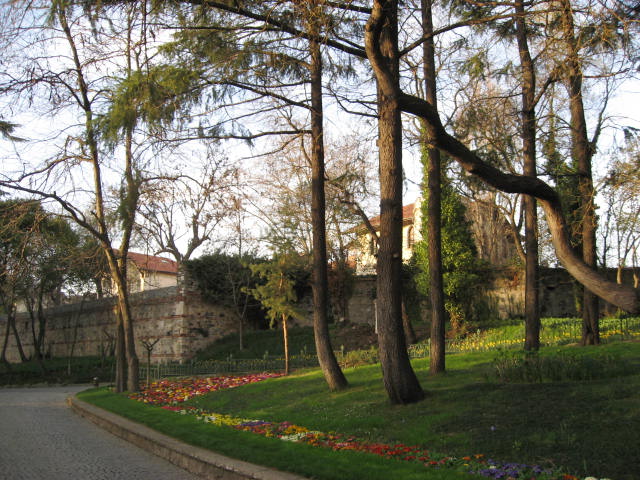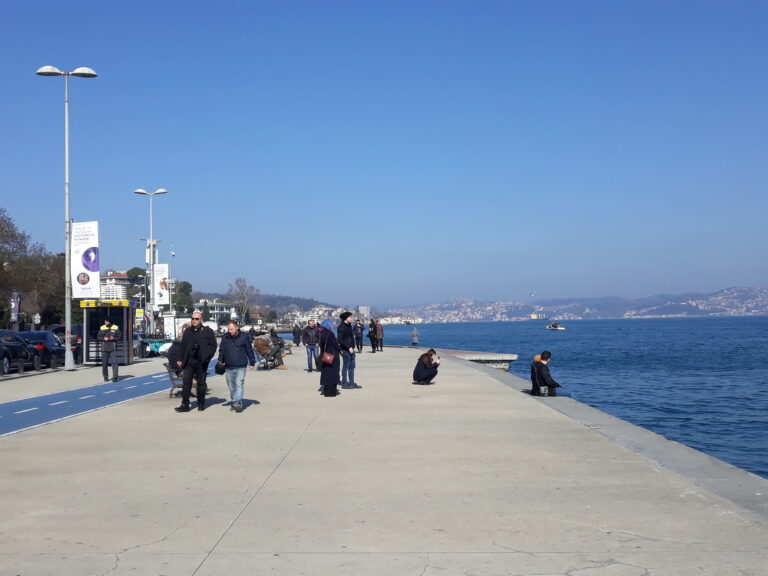Raimondo D’Aronco – an Italian Architect in Istanbul
Just before the December rains set in I took advantage of Istanbul’s blue sunny skies to go exploring. My aim was to find works by Raimondo D’Aronco, an Italian architect responsible for bringing Art Nouveau architecture to the city. Raimondo D’Aronco was born in Gemona del Friuli (by coincidence part of the district where my husband’s family comes from in Northern Italy) in 1857 and went on to study Ornamental Design and Architecture at the Academy of Fine Arts in Venice. After graduating he started working and entering architectural competitions where his original and imaginative designs met with considerable success. In 1893 Sultan Abdülhamid II of Turkey requested the Italian government provide an architect to design an exhibition to mark his 20 years of rule. A devastating earthquake in 1894 put an end to the project but D’Aronco stayed and oversaw inspections and repairs to damaged buildings. As the first ever foreign born palace architect Raimondo D’Aronco was also charged with remodelling part of Yıldız Saray, the sultan’s private residence. He worked alongside Sarkis Balyan, a member of the famous Armenian family that built Dolmabahçe Palace. While the Balyans specialised in monumental grandeur, D’Aronco used Rococo exuberance combined with experimental Art Nouveau. This early work allowed him to explore ways to articulate Art Nouveau motifs together with Ottoman sensibilities and come up with unique and beautiful designs. You can read all about Raimondo D’Aronco and how to visit the Seyh Muhammed Zafir Türbe, a tomb built for religious leader Seyh Zafir, on page 114 of my alternative guide book Istanbul 50 Unsung Places.
When I saw it, the elegant lines of the bars protecting the windows were obscured by an enormous ATV chained to them. Ignoring this I studied the tomb from all sides, admiring the way D’Aronco had combined Jugenstil (German and Austrian Art Nouveau) rectilinear form with the late-Ottoman focus on small fanciful landmarks. As I crouched awkwardly trying to get a shot sans ATV, the tea man at the stand next door (really just an open tent fashioned from tarpaulin and decorated with leafy vines) approached and offered to move it so I could take better photos. I was delighted and tried to help but discovered I could barely lift the chain, let alone move it. After I’d taken all the shots I wanted and he’d rolled the ATV back in place we started to chat. He told me has four children, two girls and two boys. The daughters are both married and one son, currently doing his military service, is engaged. To date he has two grandchildren but I have no doubt there will be more soon. He was very curious to know why I lived in Turkey and when I told him what I loved about living here he happily agreed. He let me take his photo as a memento after I promised not to share it on social media. Declining his offer of tea I caught a bus up the top of the steep hill and went in search of my next address.
I was looking for ex-Imperial Stables built by Raimondo D’Aronco, supposedly located on Palanga Caddesi. Lovely leafy trees line this long winding street where almost every property is owned by the army or the government. Consequently it’s completely empty of street vendors and parked cars, making it a rarity in Istanbul. I couldn’t locate the stables but I did manage to chat with the security guard at Yıldız Şale (Yıldız Chalet). The chalet itself is being completely restored and isn’t open to the public at the moment. However the guard told me there are other Raimondo D’Aronco buildings in the complex, but he wasn’t allowed to let me in. Oh well, I’ll just have to wait for news of its reopening.
Back down on Çırağan Caddesi I caught a bus to Karaköy and then headed up Şair Ziya Paşa Caddesi, in search of a fountain designed by Raimondo D’Aronco . I found it being used as a very smart piece of advertising for a shop selling lights and other electrical paraphernalia. I couldn’t decide which colour version I like best so decided to post all three. Which one’s your favourite?
Raimondo D’Aronco was prolific with his ideas but sadly many of his projects were never realised and exist only on paper. Of those that were built, the magnificent Botter House at 235 Istiklal Caddesi restored to its former glory in 2023. It was built in 1900-1901 for Jean Botter, a Dutchman who worked as the Sultan’s tailor. Originally the ground floor housed his atelier and showroom, while the upper floors contained private apartments.
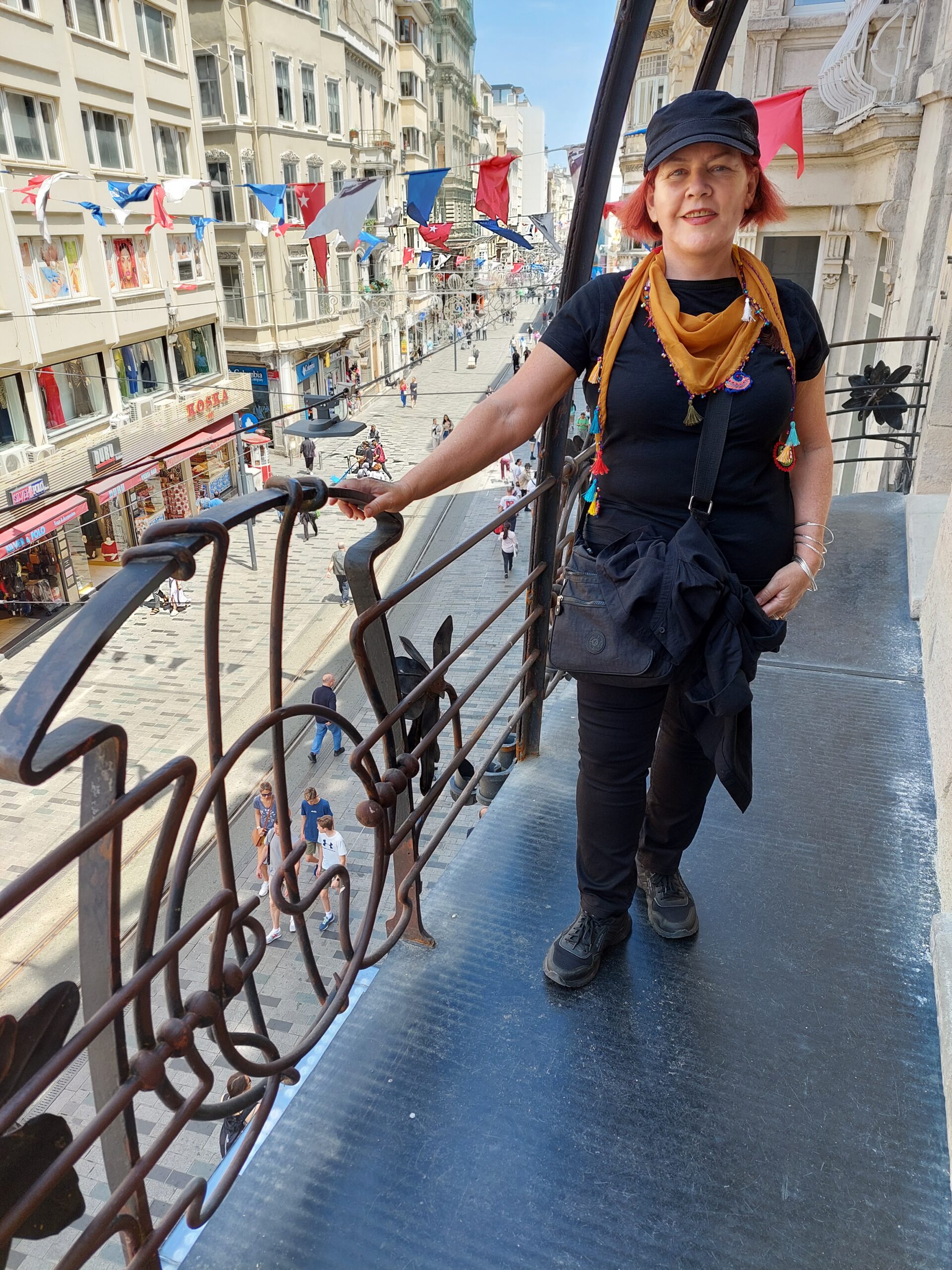
As well as building his atelier, Raimondo D’Aronco also built Botter four houses in Kalamis, one for him and his three daughters, on the Asian side of Istanbul, opposite what is now Kalamis Marina. Only two of them have survived Istanbul’s merciless redevelopments, Jean Botter’s own residence and a smaller house used by his daughter Louisa Botter.
The main house was in a state of disrepair until it was restored in 2009. It was used as the Fenerbahçe Büselik from 2020 until a few years ago, and currently stands empty. It has beautiful stained glass windows, a feature Raimondo D’Aronco liked to use. A Happy Moon restaurant occupies what I believe was Louisa’s house.
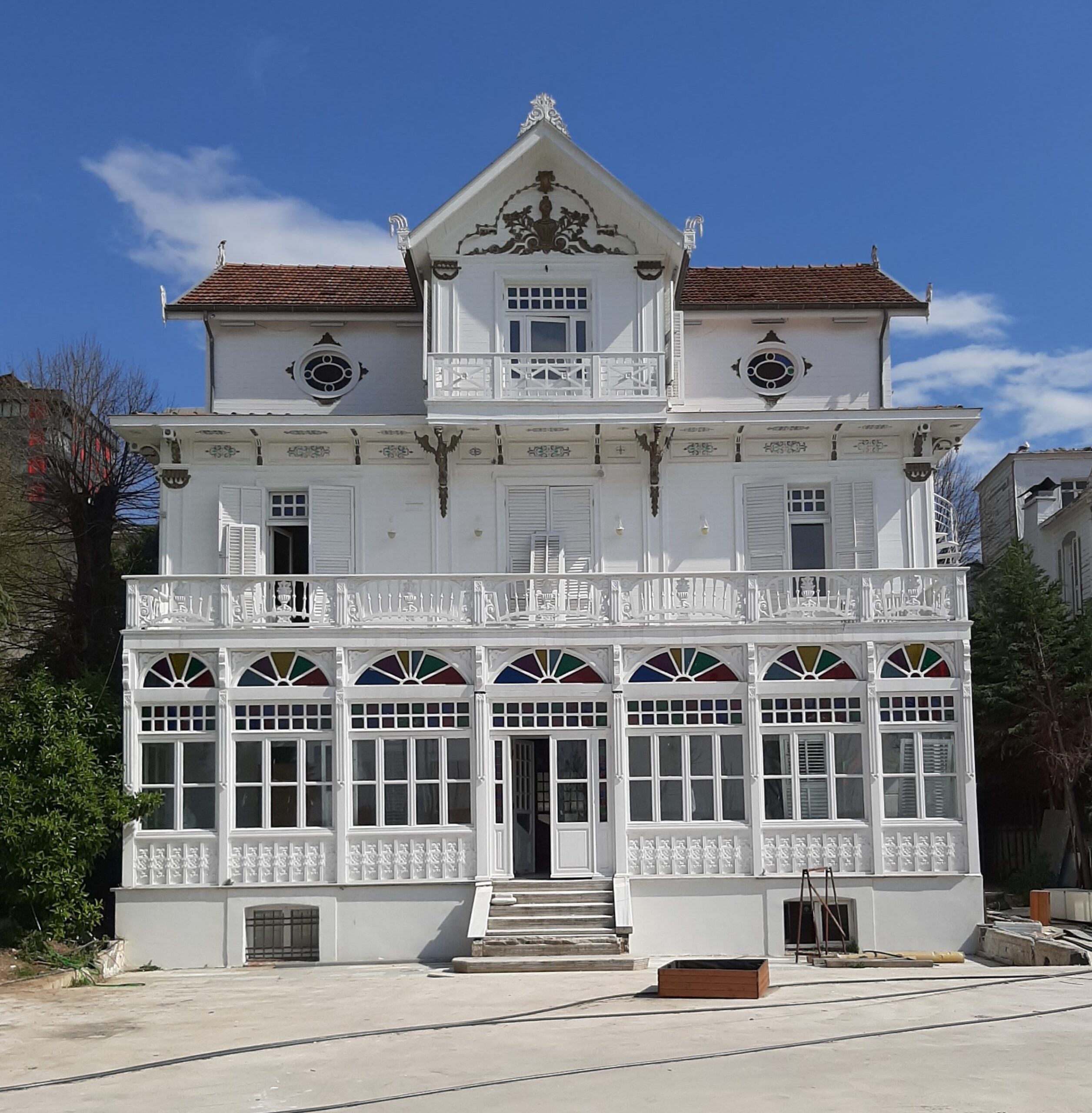
After Sultan Abdülhamid II was deposed in 1909 Raimondo D’Aronco returned to Italy and died in 1932. He was a humble man who avoided the limelight, never granting a press interview or boasting of his achievements. Luckily for us he left behind a small but perfect architectural legacy – a fitting testimony to this extremely talented individual.
Want to see Raimondo D’Aronco’s work for yourself? Here are my helpful tips for planning your trip.
For FLIGHTS I like to use Kiwi.com.
Don’t pay extra for an E-VISA. Here’s my post on everything to know before you take off.
However E-SIM are the way to go to stay connected with a local phone number and mobile data on the go. Airalo is easy to use and affordable.
Even if I never claim on it, I always take out TRAVEL INSURANCE. I recommend Visitors Coverage.
I’m a big advocate of public transport, but know it’s not suitable for everyone all the time. When I need to be picked up from or get to Istanbul Airport or Sabiha Gokcen Airport, I use one of these GetYourGuide website AIRPORT TRANSFERS.
ACCOMMODATION: When I want to find a place to stay I use Booking.com.
CITY TOURS & DAY TRIPS: Let me guide you around Kadikoy with my audio walking tour Stepping back through Chalcedon or venture further afield with my bespoke guidebook Istanbul 50 Unsung Places. I know you’ll love visiting the lesser-known sites I’ve included. It’s based on using public transport as much as possible so you won’t be adding too much to your carbon footprint. Then read about what you’ve seen and experienced in my three essay collections and memoir about moving to Istanbul permanently.
Browse the GetYourGuide website or Viator to find even more ways to experience Istanbul and Turkey with food tours, visits to the old city, evening Bosphorus cruises and more!
However you travel, stay safe and have fun! Iyi yolculuklar.
